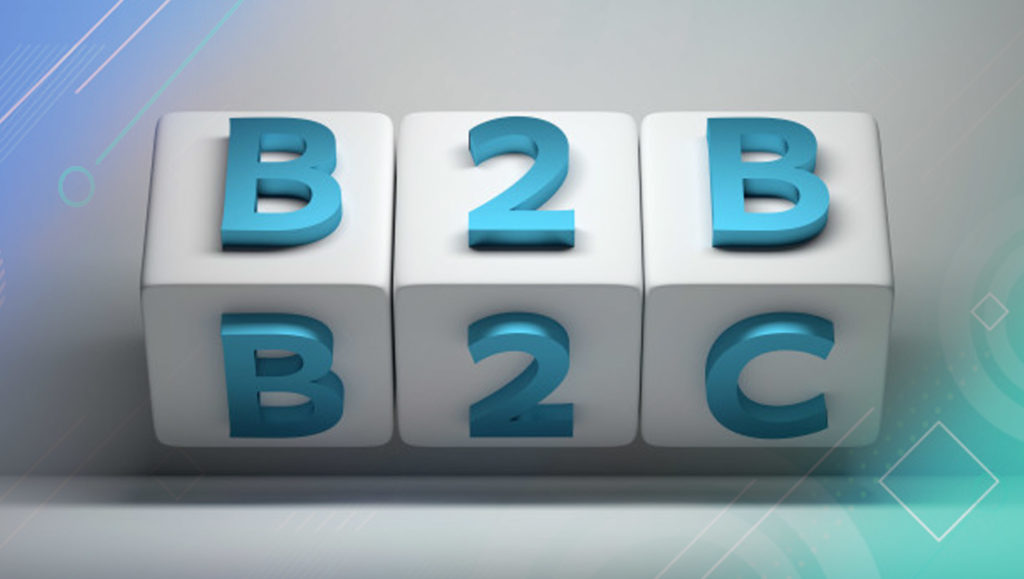 The internet has changed the way entire industries do business and engage with their customer bases. B2B companies are a prime example. Many companies are branching out from doing business exclusively with buyers and distributors, and at least 60% of manufacturers and wholesalers now leverage e-commerce platforms that let them sell directly to consumers, too.
The internet has changed the way entire industries do business and engage with their customer bases. B2B companies are a prime example. Many companies are branching out from doing business exclusively with buyers and distributors, and at least 60% of manufacturers and wholesalers now leverage e-commerce platforms that let them sell directly to consumers, too.
Adopting best practices from B2C helps B2B companies remain innovative and competitive. Engaging markets with “B2B2C” experiences online—such as transactional websites, social media content, mobile apps and more—generates brand awareness and repeat business across a spectrum of new customers.
The next frontier of opportunity for B2B2C is Global Sales. This means innovative companies must empower their marketing teams to localize customer experiences for international audiences. In an increasingly global marketplace, consumers expect to be able to do business online in the languages they prefer.
The Importance of Translation for B2B2C
For companies pursuing a B2B2C approach in international markets, website translation is no longer a “nice to have”—it’s a must. Twenty years ago, more than 80% of all online users were native English speakers. Today, it’s less than a quarter.
A 2014 Common Sense Advisory study revealed that 75% of global customers prefer to buy in their native language. Another study found that, given the option, nine out of 10 European customers always choose their native language when online.
This same study also found that 40% never purchase products and services in other languages.
Read More: Connecting the Modern Seller to the Modern Buyer: The Role of Marketing in Sales Enablement
The Benefits of Localized Content
Localized online content generates more conversions and revenue in global markets than an untranslated customer experience (CX). But other major benefits include:
Discoverability: Translated, SEO-rich content helps multilingual international customers find your brand online, increasing your website’s organic traffic. Localized Omnichannel content, Twitter cards, and Open Graph data can also boost referral traffic to your multilingual websites.
Engagement: Localizing product information and conversion funnels is critical for reducing bounce rates and increasing time on-site. Companies can also leverage smart language-detecting technologies to greet customers in their preferred languages and direct customers from domestic sites to localized versions.
Brand Trust: Companies can use localized content to demonstrate their interest in international markets and encourage customers to get to know, purchase from, and stick with their brand. Other ways to build customer trust include highlighting local holidays and offering exclusive promotions.
The Challenges of Localization
Despite the importance of a localized CX, most B2B2C companies face challenges when making this important pivot. Their lean teams just can’t handle the extensive workloads and ongoing technical burdens associated with CX localization.
One of the main challenges of CX localization is making sure that all website content is translated accurately. Often, companies fail to translate certain aspects, like multimedia, dynamic content third-party content.
These shortcomings often create a “mixed language” online experience, where some content may be localized, but other content remains untranslated. Further, when webpage templates aren’t optimized to accommodate longer translated content, serious design issues with navigation, headlines, and other UX elements commonly occur.
These websites look amateurish and may not function properly, motivating international customers to abandon the site without converting.
How to Find the Right Translation Solution
Avoid the pitfalls of in-house translation and instead, look for solutions that are built to handle the demands of localizing a digital customer experience. Look for a solution that is:
- Built with the express purpose of minimizing complexity and cost
- Turn-key at launch and ongoing, with all personnel, processes, and technology provided by the vendor
- Capable of translating and operating your localized website while optimizing the customer experience across all channels
- Able to accurately identify, translate and publish new content within one business day
- Compatible with any CMS, website or programming language
- Able to localize omnichannel content
The success of your company’s expansion into the global B2B2C space depends on technologies and processes that eliminate costs and effort, not increase them.
Read More: Solving the Advertising Talent Problem with Technology
Conclusion
B2B2C companies, and B2B companies pursuing a B2B2C model depend on stellar customer experience to gain the attention and loyalty of end-users in global markets. Avoid the risks that come with partial translations, and keep an eye out for translation solutions built specifically for website localization.
A modern, digital localization solution is ideal for long-term success as companies grow their international reputation as B2B2C brands.
Read More: Analyzing the Big Five Traits Your Brand Personality Needs to Be Reputable




















